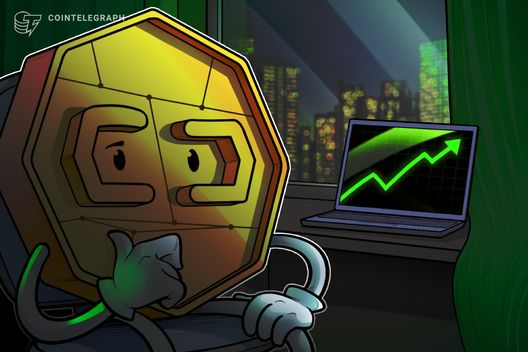

Hyperliquid has demonstrated significant growth and innovation in the decentralized exchange (DEX) landscape, particularly in the perpetual futures market. Its expanding user base and strategic initiatives could potentially drive the price of its native token, HYPE, back to the $45 mark.
Hyperliquid has experienced a surge in trading volume, reaching $244 billion in May 2025. This impressive figure represents roughly 10% of Binance's total derivatives trading volume during the same period, highlighting Hyperliquid's ability to attract a broad user base seeking decentralized alternatives to centralized exchanges. The platform commands a substantial portion, approximately 70-80%, of the on-chain perpetual futures market, with daily trading volumes hitting $6.4 billion. This growth is supported by Hyperliquid's efficient order execution and robust infrastructure, providing low latency and high throughput essential for derivatives trading.
The platform's technology and user-centric features are key to its success. Hyperliquid operates on a layer-1 blockchain with a unique consensus mechanism called "HyperBFT". This design facilitates a zero gas fee market and a fully on-chain order book, enhancing efficiency and user appeal. Hyperliquid distinguishes itself from traditional exchanges by being non-custodial, ensuring that it never holds user funds directly. The introduction of builder codes, which allow users to build front-ends on top of Hyperliquid's order book engine, supports a modular compliance strategy. This allows third-party frontends to implement KYC if needed, bridging regulatory obligations with the protocol's decentralized foundation without compromising its neutrality.
Hyperliquid's native token, HYPE, has played a crucial role in the platform's growth. Since its Token Generation Event (TGE), HYPE has experienced substantial growth, driven by real user adoption, strong fee generation, and an aggressive buyback model that returns 97% of trading fees to token holders. The airdrop of 31% of the 1 billion HYPE supply to early users sparked strong community engagement and sustained trading momentum.
Recent developments, such as the partnership with Phantom wallet, further expand Hyperliquid's reach. This collaboration allows Phantom users to engage in perpetual futures trading directly within their wallet, providing easy access to over 100 crypto markets, including popular assets like Bitcoin, Solana, and Ethereum. The integration offers a streamlined, mobile-first experience with up to 40x leverage and integrated risk management tools like stop-loss and take-profit orders. This move positions Hyperliquid to compete with new perpetual trading plans from Coinbase and Robinhood in the race for user acquisition.
Despite the positive outlook, Hyperliquid faces certain challenges. A recent instance of a whale selling a large amount of HYPE tokens at a loss put pressure on the token's price, causing it to trade in a narrow range. This event, coupled with declining trading volume and negative sentiment across social platforms, suggests a cautious market environment. Additionally, while Hyperliquid brands itself as decentralized, its validator set remains relatively concentrated. The decentralized HLP vault is also vulnerable to arbitrage and manipulation, as seen in the JELLY incident, which highlights the need for robust risk management and greater transparency as the platform scales.
However, Hyperliquid's solid growth trajectory, strategic partnerships, and innovative features could retain investors' interest in HYPE. The platform's ability to capture a significant share of the DeFi perpetual contracts market, coupled with its focus on user experience and regulatory compliance, positions it for continued success. If Hyperliquid can maintain its growth momentum and address the existing challenges, a return to the $45 level for HYPE is certainly within reach.